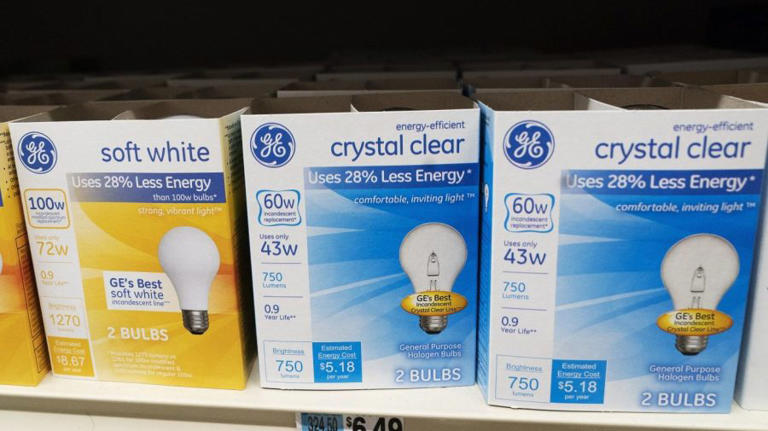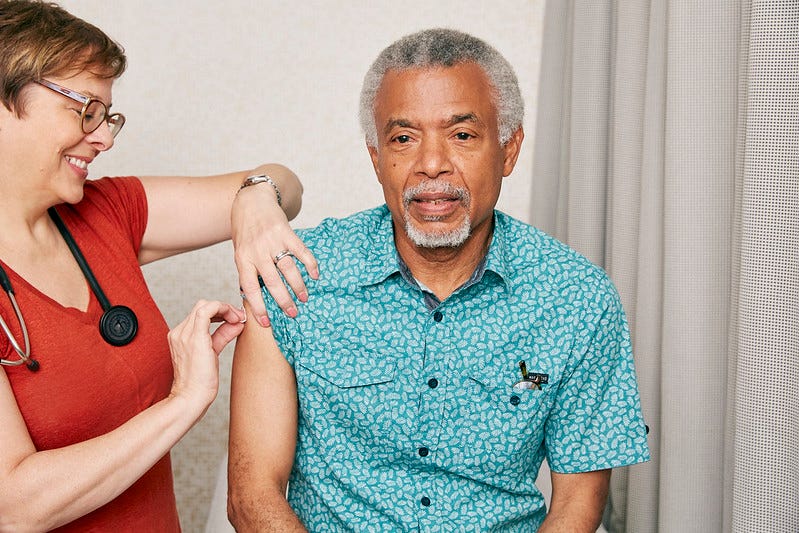
Roundup and analysis of the top headlines on health security, pandemic preparedness, COVID-19, and other news from the Johns Hopkins Center for Health Security
Please note that some links may require subscription or registration
August 7, 2023
TOP NEWS
EG.5.1, nicknamed 'Eris,' spreading globally, accounts for more than 17% of US cases
Since the WHO Virus Evolution Working Group added EG.5, an Omicron descendant of XBB.1.9.2, to its list of variants under monitoring (VUM) in July, the SARS-CoV-2 subvariant has taken the top spot in the US, accounting for an estimated 17.3% of new COVID-19 cases, according to US CDC data. In the UK, EG.5.1, nicknamed "Eris," accounts for about 15% of COVID-19 cases, making it the second most prevalent variant there. The rise of EG.5.1 is also notable in Asia, where it was originally detected.
Several nations are experiencing small but notable surges in COVID-19 cases. It is unclear whether EG.5 is driving the increases, or when the wave in the US will peak, but the surge likely will be nothing like the initial Omicron event. Globally, more than 1 million new COVID-19 cases and over 3,100 deaths were reported in the last 28 days, but those numbers do not accurately reflect true infection rates due to a lack of testing and reporting, according to WHO.
Symptoms of EG.5.1 vary slightly from previous variants, mimicking those of the common cold or allergies, with sore throat, runny nose, clogged nose, sneezing, dry cough, and headache as the leading symptoms. Notably, shortness of breath, loss of smell, and fever are no longer primary symptoms, although some could still experience them. Without access to free tests, many in the US might not spend the money to buy at-home tests or see a doctor, but free tests are still available in some communities. Anyone with symptoms should consider testing, especially if planning to gather in groups or with people who are at-risk of serious COVID-19.
Clearly, SARS-CoV-2 is continuing to mutate to find ways around our existing immunity, highlighting the urgent need for updated booster vaccines and efforts to find new treatments. An updated booster targeting XBB.1.5 is expected sometime this fall and is expected to be effective against EG.5.1. Some people, however—particularly older adults, those who are immunocompromised, and children—might want to get another booster now to provide some immunity to currently circulating strains. Immunity from previous infection might help, but nearly 2.5 million people in 17 US states have tested positive for COVID-19 more than once. With the threat of a possible "tripledemic" of COVID-19, influenza, and RSV this winter, and vaccines against all of them available to at least some of the US population, the message should be simple: if you are eligible for a vaccine, get it.
Pandemic preparedness plans must account for inequalities in access to healthcare, make investments now, experts and advocates say
In the US, health equity is not yet assured for all racial and ethnic groups, with various health and social determinants contributing to disparities in mortality, according to a recently published comment in The Lancet. Another comment, published today in The Guardian, notes that the COVID-19 pandemic laid bare inequalities often driven by government policies. Therefore, preventing epidemics that thrive amid inequality requires various sectors to work together to bring about change in policy but also in the systems that deliver healthcare. Several recent articles highlight areas for improvement before the next health emergency.
The programs contained under the 2020 CARES Act and 2021 American Rescue Plan Act produced measurable positive results, but that progress is being erased with the end of those initiatives:
Washington Post: The $5 trillion pandemic safety net changed lives. Now it’s over.
NPR: Texas Medicaid dropped more than 500,000 enrollees in one month
MedPage Today: It Shouldn't Take Another Pandemic to Invest in Digital Health (commentary)
Due to disruptions in healthcare, early-stage cancer diagnoses dropped nearly 20% during the first year of the pandemic, but stage 4 cancer diagnoses were 7% more likely in 2020, with communities of color hit particularly hard:
STAT: Pandemic slowed cancer diagnoses, but late-stage cancers came back with a vengeance
The Lancet Oncology: Changes in cancer diagnoses and stage distribution during the first year of the COVID-19 pandemic in the USA: a cross-sectional nationwide assessment
People who receive dialysis, and others who need routine medical care to survive, are especially vulnerable during times of crisis. Some doctors and patient advocates are pushing to plan for their care in official emergency plans, such as including dialysis equipment in the US Strategic National Stockpile:
STAT: Kidney doctors push to protect patients by including dialysis machines in emergency stockpile
MORE HEADLINES
Expert calls for implementation of gene synthesis rules, advanced governance of AI to help reduce risk of biological design tool misuse
Vox: ChatGPT could make bioterrorism horrifyingly easy (commentary)
ICYMI: Johns Hopkins Center for Health Security: Center for Health Security applauds the introduction of 2 critical bills to protect health security from potential threats arising from advances in biotechnology
ProMED, an early warning system for disease outbreaks, in crisis, moves to subscription-based model
STAT: ProMED, an early warning system on disease outbreaks, appears near collapse
Science: Long-running ProMED email service for alerting world to disease outbreaks is in trouble
STAT: Organization behind ProMED defends move to subscription-based model
Wired: A Crucial Early Warning System for Disease Outbreaks Is in Jeopardy
UKHSA opens new Vaccine Development and Evaluation Centre to support pandemic preparedness efforts
The Guardian: New vaccine research centre in UK to help scientists prepare for 'disease X'
Oxford Mail: UK scientists get to work at new vaccine centre to prepare for 'disease X'
Bivalent COVID-19 vaccine as 4th dose protects better against medical treatment, hospitalization than 4th dose of monovalent vaccine
CIDRAP: Bivalent COVID booster protects against poor outcomes better than 1-strain 4th dose
The Lancet Infectious Diseases: Effectiveness of bivalent mRNA vaccines against medically attended symptomatic SARS-CoV-2 infection and COVID-19-related hospital admission among SARS-CoV-2-naive and previously infected individuals: a retrospective cohort study
The Lancet Infectious Diseases: The superiority of bivalent over monovalent booster vaccines
Community health workers serve as trusted messengers, system navigators but struggle for funding, recognition
STAT: Community health workers, experts in the in-between, fight for their place in the system
See our research and resources: Johns Hopkins Center for Health Security: Strategies for Standing Up, Strengthening, and Sustaining the Local Community Health Sector (aka, CommuniVax 2.0)
Influenza season in tropics unpredictable, research shows; 2022-23 flu deaths in UK higher than average, interim analysis suggests
Penn State: Influenza shows no seasonality in tropics, posing challenges for health care
The Lancet Respiratory Medicine: Influenza deaths for the 2022–23 season
See also: CIDRAP: CDC reports 2023’s first two US human infections with swine flu
US CDC panel recommends RSV drug nirsevimab for infants, at-risk children aged 8-19 months
STAT: CDC recommends RSV monoclonal antibody for infants, high-risk young children
Axios: New RSV shots could give parents peace of mind or sow more vaccine confusion
Naturally occurring bacteria could provide new way to control malaria
Science: Microbe stops mosquitoes from harboring malaria parasite
Financial Times: Bacteria in mosquito guts trialled as weapon against malaria
Urbanization, migration, climate changes fueling dengue outbreaks in Americas, Bangladesh
Health Policy Watch: Dengue Cases Soar in Americas as Mosquitoes Find New Habitats
The Lancet: Bangladesh faces record dengue outbreak
Washington Post: Bangladesh battles its deadliest dengue fever outbreak on record
Sustained heat waves increasing health risks, including enabling spread of disease-carrying mosquitoes, infectious fungi
STAT+: 'Shocking' heat waves persist through August as federal officials warn of far-ranging health risks
The Guardian: Virus-carrying tropical mosquitos found in Finland as climate heats
CBS News: Valley fever is on the rise in the U.S., and climate change could be helping the fungus spread
See also: Devex: Opinion: Climate-driven pandemics are coming. Will we be ready? (commentary)
Antibiotic use rose during COVID-19 pandemic, underlining importance of stewardship efforts
CIDRAP: US hospital data confirm rise in antibiotic use during COVID pandemic
Fox News: Antibiotic resistance is on the rise, doctor warns: 'This is an enormous problem'
CIDRAP: Study: Antimicrobial stewardship programs in rural hospitals lack resources, infectious disease expertise
See also: Nature: Finding the source of bacterial superpowers
Routine childhood vaccination rates falling short of goals, US CDC data, study show; US HHS official calls on parents to speak out against vaccine myths, fears
The Hill: Childhood vaccinations falter ahead of crucial fall season
Washington Post: 17 percent of U.S. toddlers falling short on childhood vaccinations
Fox News: Rachel Levine urges parents to 'speak up,' defend vaccines at school board meetings from 'myths and fear'
See also: The Hill: 94 percent of children in Ohio measles outbreak were unvaccinated: CDC
US NIH pauses initiative aimed at improving health communication science, practice; European Research Council launches program to establish science journalism residency program in research institutions
KFF Health News: The NIH Ices a Research Project. Is It Self-Censorship?
Nature Italy: Helping science journalists and scientists learn from each other












